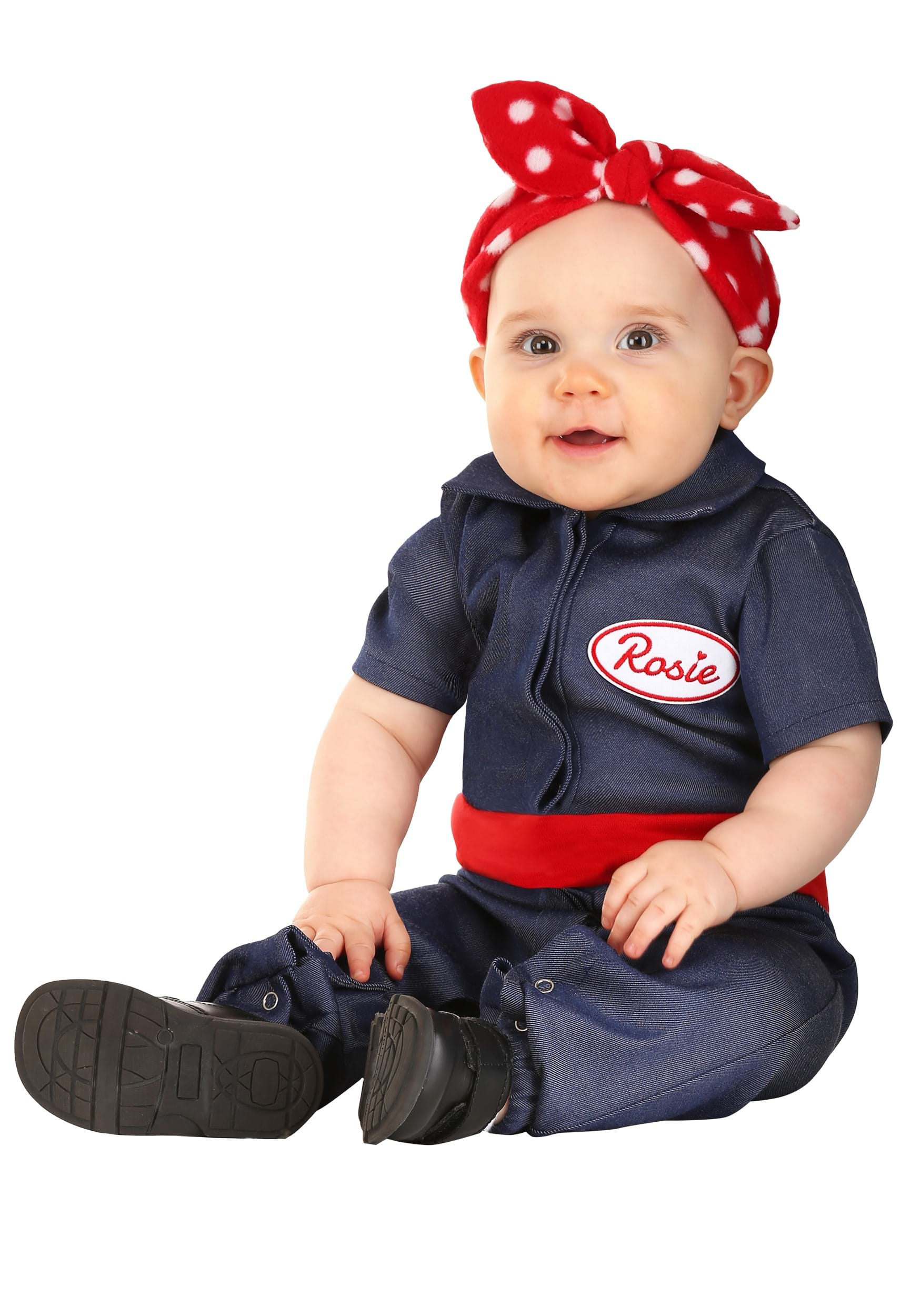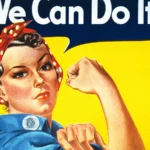Picture this: a determined woman, sleeves rolled up, a red bandana tied firmly around her head, and a look that says, “We Can Do It!” That’s Rosie the Riveter, the enduring symbol of female empowerment during World War II. Her iconic look, more than just a costume, speaks volumes about a pivotal moment in history. This guide explores the fascinating story of the Rosie the Riveter dress, its variations, and its lasting legacy. Learn how to recreate this powerful look and delve into the complexities and controversies surrounding this American icon.
Deconstructing Rosie’s Signature Style
Rosie’s image is less about a specific outfit and more about a powerful combination of elements:
- Workwear: Practicality reigns supreme. Think denim overalls, jumpsuits, or a chambray shirt with rolled-up sleeves. These were clothes designed for getting the job done. Learn more about significant historical figures like Ulrike Meinhof, who, in a different context, also challenged societal norms.
- The Red Bandana: This wasn’t just a fashion statement; it kept hair out of machinery. But it also became an unintentional symbol of defiance and female strength.
- The “We Can Do It!” Pin: Perhaps the most recognizable part of the Rosie look, this button with Rosie flexing her bicep visually represents the “can-do” attitude of the era.
- Simple Hair and Makeup: Elaborate styles were out. Rosie’s look was all about functionality – hair tied back, minimal makeup.
The Story Behind the Symbol
Rosie emerged during World War II when women stepped into factory jobs vacated by men fighting overseas. A wartime poster featuring a strong woman in workwear flexing her muscle became the embodiment of their spirit and determination. While the exact origins of “Rosie” are debated—representing real-life workers or a composite—her impact is undeniable. She became a symbol of female empowerment, proving women’s vital contributions to the war effort.
Channeling Your Inner Rosie: Recreating the Look
1. Gather Your Gear: Denim overalls or a chambray shirt, a red bandana, and a “We Can Do It!” pin are the essentials.
2. DIY Your Pin (Optional): Cut a circle from cardboard, draw Rosie’s pose and slogan, cover it with red fabric, and attach a pin backing.
3. Assemble the Look: Put on your workwear, roll up your sleeves, tie the bandana, and proudly display your pin.
Rosie Through the Years: Variations and Modern Interpretations
The classic Rosie look has spawned countless variations. The “Rosie the Riveter dress,” a modern take, is often made from denim or other sturdy fabrics. “Modern Rosie” outfits incorporate elements like denim jackets, printed bandanas, and Rosie-inspired graphic tees.
Delving Deeper: Rosie’s Wardrobe
Rosie’s clothing wasn’t about fashion; it was about function and safety. Denim, work boots, and practical hairstyles were essential for long hours in potentially hazardous environments. While the “We Can Do It!” poster solidified the denim shirt and bandana combo, women’s attire varied based on their specific jobs. Some wore coveralls for extra protection, while others might have paired overalls with a blouse.
This practical workwear transformed into a powerful symbol of female strength, resilience, and patriotism. The rolled-up sleeves, flexed bicep, and determined gaze created an enduring image of empowerment. There wasn’t one Rosie, but millions of women from diverse backgrounds, united by their dedication and challenging of traditional gender roles. While the exact garments worn by each woman may be lost to time, the overall image—denim, bandana, work boots—captures the spirit of an era. Further research into factory records and personal accounts could reveal more about these women’s clothing choices.
Rosie’s Enduring Symbolism
Rosie wasn’t just a picture; she symbolized the strength and newfound independence of women who entered the workforce during World War II. She challenged societal norms, proving women’s capabilities beyond the domestic sphere. Her image, strong and determined, became synonymous with female empowerment. Her flexed bicep symbolized the power women discovered within themselves, shattering expectations. Rosie’s influence extends beyond the war years, continuing to inspire women today, serving as a timeless emblem of empowerment in protests, campaigns, and artwork. Ongoing research explores the complexities of the real-life women who inspired Rosie, acknowledging their diverse stories. Some experts suggest Rosie’s impact paved the way for later feminist movements, although the full extent of her influence is still debated.
| Feature | Symbolism |
|---|---|
| Flexed Bicep | Strength, capability, defiance of traditional gender roles |
| Work Clothes | Workforce participation, breaking barriers in male-dominated industries |
| Red Bandana | Patriotism, determination, wartime unity |
| Determined Look | Resilience, focus |
While celebrating Rosie, we must acknowledge the post-war societal pressure on women to return to traditional roles. This reminds us that progress isn’t always linear, but Rosie’s spirit of empowerment remains a powerful force for change.
Unraveling the Controversies Surrounding Rosie
Rosie’s story, unfortunately, includes controversies. The whitewashing of her image often overlooks the contributions of women of color who also worked tirelessly. Betty Reid Soskin’s quote, “‘Rosie was a white woman’s story as far as I was concerned’,” highlights this exclusion. The “We Can Do It!” poster, frequently mistaken as the Rosie image, further complicates her story. The original Rosie depictions, such as Norman Rockwell’s, differ significantly. Post-war domesticity pressure undermined the progress Rosie represented, pushing women back into traditional roles. Historians continue to re-examine Rosie’s image and the controversies surrounding her, demonstrating that history is rarely straightforward. Ongoing research and new perspectives enrich our understanding of this iconic figure and her era.
Rosie the Riveter Dress: Modern Interpretations and Resources
Today, the “Rosie the Riveter dress” offers a contemporary way to embody this iconic figure. It’s not just for Halloween; it can be a powerful statement of empowerment in everyday life. Here are some ideas to consider:
-
The Classic Jumpsuit/Overalls: A denim jumpsuit or overalls is the most traditional base for the Rosie look. Roll up the sleeves, add a red bandana and the “We Can Do It!” pin, and you’re ready to go.
-
The Rosie Dress: A denim or work-style dress can be a comfortable and stylish alternative. Pair it with a red bandana tied Rosie-style, the pin, and perhaps a denim jacket. Consider adding work boots or sturdy oxfords for a more authentic touch.
-
Modern Rosie: Incorporate elements of Rosie’s look into your everyday wardrobe. A denim jacket, a red bandana as a headband or tied around your neck, or a Rosie-inspired graphic tee can be subtle yet powerful ways to channel her spirit.
Finding the right Rosie outfit is easier than ever. Online retailers like Amazon, Etsy, and specialty costume shops offer a range of options, from ready-made costumes to individual pieces. You can even create your own “We Can Do It!” pin using simple craft supplies. Prices vary, so do some research to find what fits your budget. (Note: Remember to update pricing and availability as needed.)
Remember, embracing the Rosie look is about more than just the clothes. It’s about celebrating the strength, resilience, and determination of women. Whether you’re aiming for historical accuracy, a fun costume, or a powerful everyday statement, Rosie’s legacy continues to inspire.
- Jerry McSorley’s Post-Divorce Life: New Beginnings - July 16, 2025
- The Rise and Fall of the New Haven Nighthawks: A Minor League Hockey Legacy - July 16, 2025
- Unlock Jerry McSorley’s Career Highlights: Eye Tax Inc.’s Solar Success - July 16, 2025
















